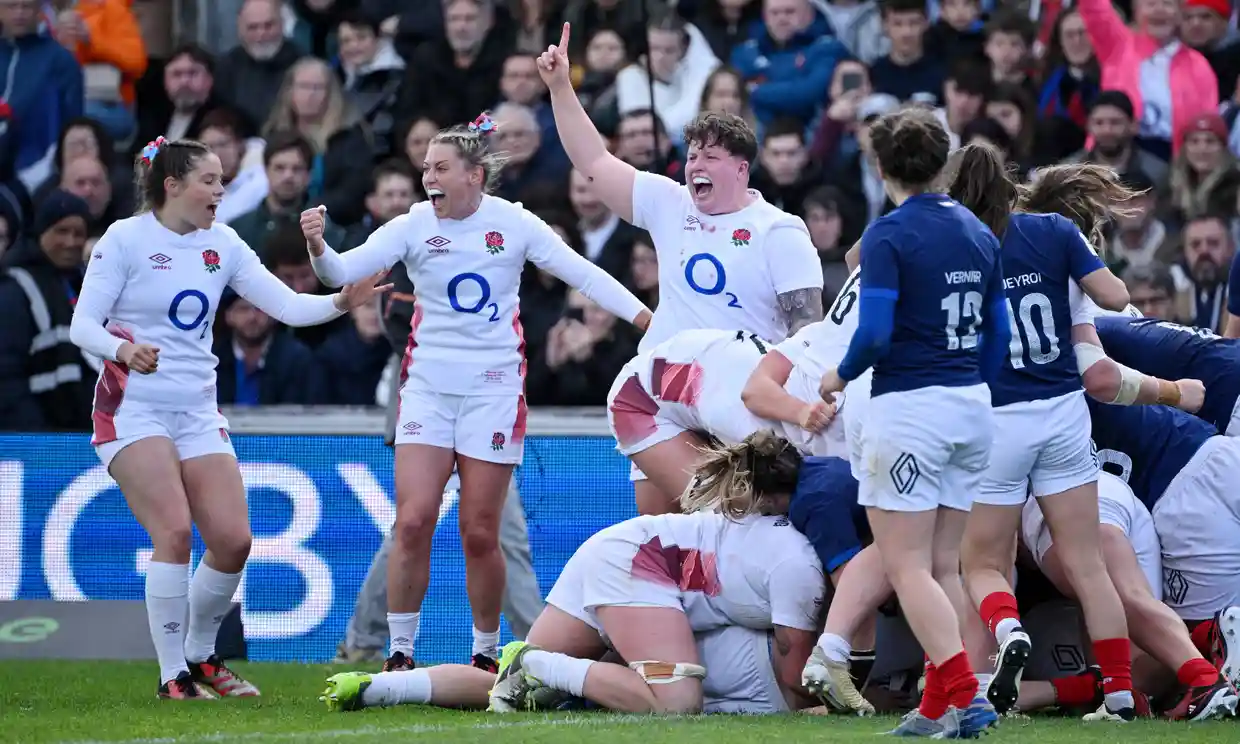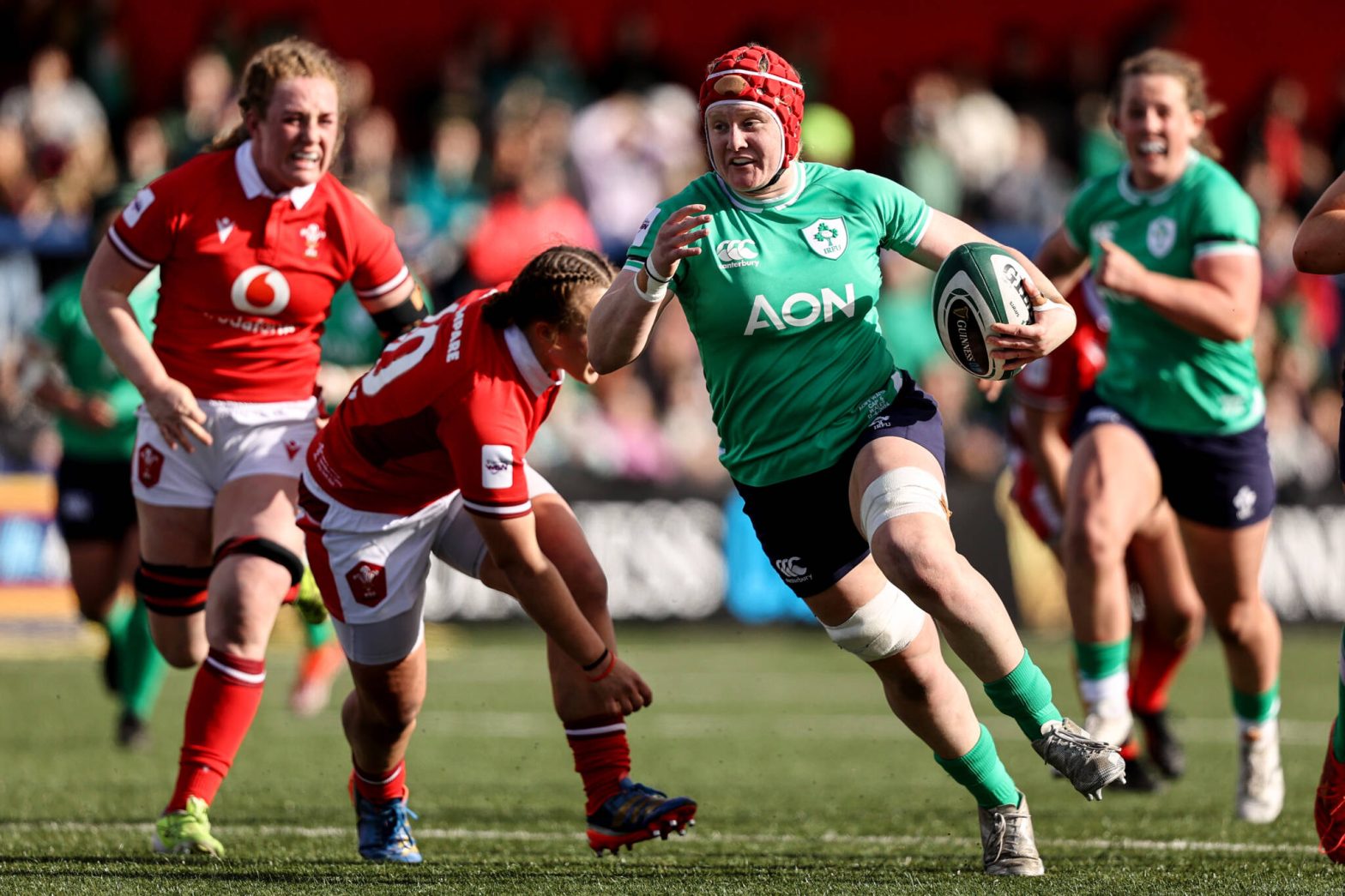The race to catch England is on
England have dominated the Six Nations - so what next for the chasing pack?
April 28, 2024
7 minute read

The leadup to the final round of the women’s Six Nations has been dominated by a debate about the future of the competition, such has been the ease at which England have raced to another title.
In the end though, the final round of the Championship reminded that this is a fantastic competition, and that England apart, there has been enormous progress and growth among the teams sitting below them.
Add to this, the enormous growth in popularity of the competition – with all the final round host teams recording their biggest ever matchday crowds, and the discussion about a different future is surely somewhat premature.
For all the debate, there are some inescapable facts.
The first is that changes to the format of the 6 Nations are highly unlikely. For that to happen, each country would need to unanimously agree and there are no suggestions that is on the cards.
The second is that England’s dominance is nothing new, and that part of the solution to that challenge has been identified and is already here, but is simply currently being badly executed.
The WXV arrived last year to minimal fanfare.
Its overly fussy qualification route and unnecessarily rigid fixture structure has made the competition appear unloved before it has even properly got off the ground.
And that is a huge shame because at its heart, this competition has the potential to be the primary route through which improvement for all those chasing England will come.
To have the teams below England, New Zealand and France playing top teams regularly is a prize that the game has been chasing for years and it’s the best reason I can offer as to why the Lions tour is a bad idea, because it shuts down WXV for a year – with development sacrificed at the altar of the possibility of making money and driving exposure for teams who already receive decent levels of investment and visibility.
Beginning in the middle of the men’s World Cup got the competition off to an inauspicious and under ambitious start a year ago, but WXV should and could have a much bigger and more impressive profile.
To use a football analogy, finishing third in the Six Nations offers a significant prize - qualifying teams as such for a ‘champion’s league’ competition, with fourth and fifth place getting you into a ‘europa league’ equivalent.
The trouble is, that WXV has been sold appallingly badly, partly in recognition that while the idea behind it is sound, the structure of the competition has been wrong from the start.
Teams know far too late what competition they will qualify for, making it impossible to choose venues strategically and market the competition effectively.
It’s also fiendishly difficult to explain and understand how and where teams qualify. The fact that Canada host WXV1 this year but are not yet 100% certain they will even play in it is a case in point.
It is frustrating that this being obvious immediately, no changes were made for this year. It will be 2026 before we see the sort of restructure that is so clear and obviously needed right now.
When it returns after the World Cup, we need a simpler structure, an opportunity for teams to move around and host some of their own games, and a much better and slicker marketing effort.
World Rugby have stayed well out of the debate in recent weeks about the competitiveness at the top of the Six Nations, but they must take control of the solution.
So if WXV is the big route to change - what else would make a difference?
Italy have already begun to consider their professional future, with the formation of Benetton and Zebre Parma offering a semi-pro regional set up for top players, and France plan to restructure their Elite 1 competition into a 10-team league (moving away from a two-pool structure) recognising that England’s PWR structure is providing massive development benefit.
Given that the French are the only team in the Six Nations within touching distance of England, that is an important move to follow, as is the continued march of their U18s and U20s programmes, which look currently miles ahead of everyone else.
Ireland too favour a provincial structure with cross border competitions for leading players – with the major challenge to this being that only one of those exists right now, and it involves Ireland’s top players playing second string Welsh and Scottish sides.
Wales and Scotland are still largely reliant on England’s domestic league structures to develop their leading players with a clear need in the long-run for more sustainable options and infrastructure to be developed.
All of these teams are investing more into their women’s programmes than ever before, but what that is spent on and what steps they take next should be the crux of any ongoing debate.
Done well and smartly, and the game is onto a winner, but don’t expect England’s dominance to end any time soon.
A final word on England who deserve enormous credit for how they are taking the game to new levels and forcing a debate about the structure of the women's game.
There have been suggestions that there is negativity about their dominance but in truth, the game should be thankful to all those who have developed and structured a programme which, with a home World Cup next year, looks on a path to greatness. All eyes are on New Zealand now to see if the juggernaut can be stopped.


